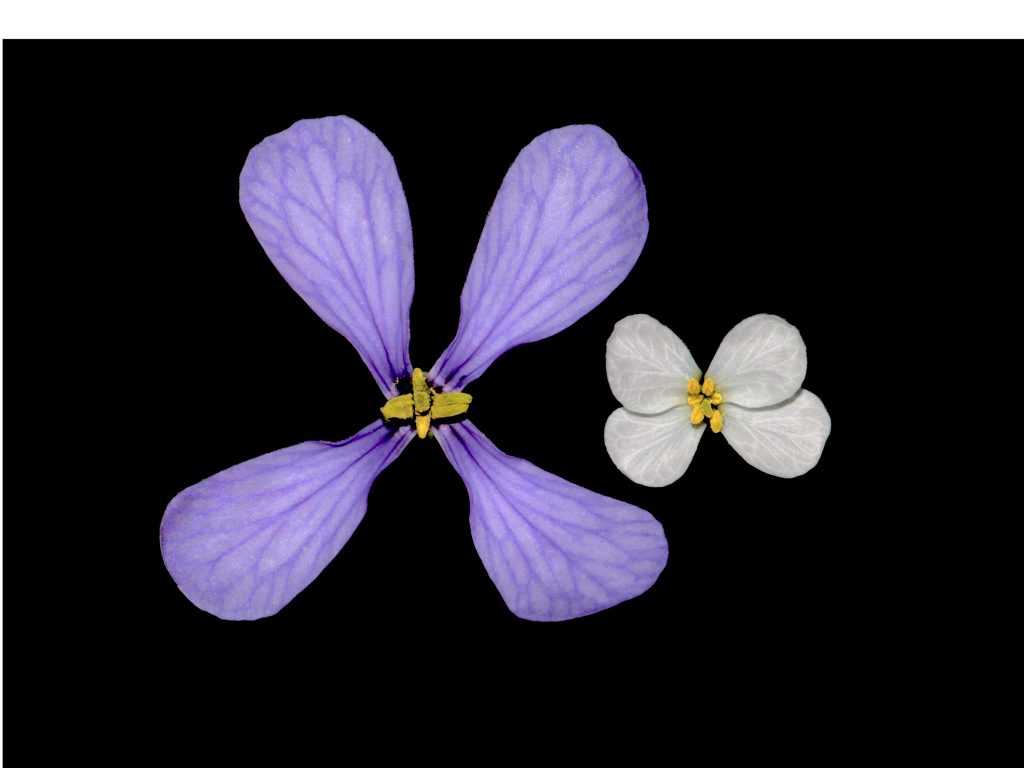Project MORE: Phenotypic plasticity as a evolutionary driver in Moricandia
In this project, we analyze the genetic basis of the phenotypic plasticity (PP) in some species of genus Moricandia (Brassicaceae), how it expresses in functional and floral traits, and its importance to understanding the ecology and evolution of this plant genus.
Four species inhabit the Iberian Peninsula: three endemic (M. rytidocarpoides, M. foetida, M. moricandioides) and one circum-Mediterranean (M. arvensis). This last species occurs in agricultural, ruderal, and disturbed habitats from south and east of the peninsula, M. moricandioides occurs in semi-deserts from eastern Spain, and the other two species are narrow-endemic desert species from SE Spain. The three Spanish species bloom during a short period during late winter or spring, whereas M. arvensis has an extended flowering spanning from late winter to summer and even autumn. We think that these differences in distribution and flowering phenology are a consequence, at least partially, of the phenotypic plasticity in functional traits displayed by M. arvensis. We also think that an effect of this functional plasticity is the presence of phenotypic plasticity in floral traits and pollination niches.
Moricandia arvensis, contrasting with the other congeneric species, exhibits ample plasticity in floral traits. Whereas spring flowers are large, cross-shaped, and lilac -similar to those of M. moricandioides-, summer flowers are small, rounded, and white -similar to those of the two desert species-. We will determine the genetic basis of this plasticity by studying the effect of environmental factors in gene expression and analyzing regulatory gene networks. We will also explore the impact of these factors in the phenotypic expression by quantifying the reaction norms of floral traits in the field and in experimental conditions.

This phenological plasticity in floral traits may entail that the same plant interacts with different pollinator assemblages during different periods. We will test this idea by comparing the spring and summer pollination niches.
We are using environmental niche modeling to test that the niche of M. arvensis is broader and more diverse than the other congeners’ niche. This larger niche width may be a consequence of M. arvensis modulating its photosynthetic metabolism during different periods.
We think that phenotypic plasticity has played a pivotal role in the adaptation of some Moricandia species to desert conditions. This process could have led to phenotypic divergence among populations adapted to different conditions, favoring the establishment of reproductive barriers and eventually giving rise to plasticity-mediated speciation. Our study will gather valuable information to test this fundamental idea.
The coordinated project “Plasticidad fenotípica como motor evolutivo en Moricandia” (MORE) has been funded by the Ministry of Science and Innovation (Project CGL2017-86626) and consists of two sub-projects:MOREeco“Evolutionary and functional ecology of phenotypic plasticity in the genus Moricandia.”PIs: José María Gómez and Cristina Armas (Experimental Station of Arid Zones, CSIC)MOREgen“Evolutionary and functional genetics of phenotypic plasticity in the genus Moricandia.”PI: Francisco Perfectti (University of Granada)
Publications:
Gómez JM, Perfectti F, Armas C, Narbona E, González-Megías A, Navarro L, DeSoto L, Torices R. 2020.
Within-individual phenotypic plasticity in flowers fosters pollination niche shift.
Nature Communications 11: 4019
BLOG
Project MORE
